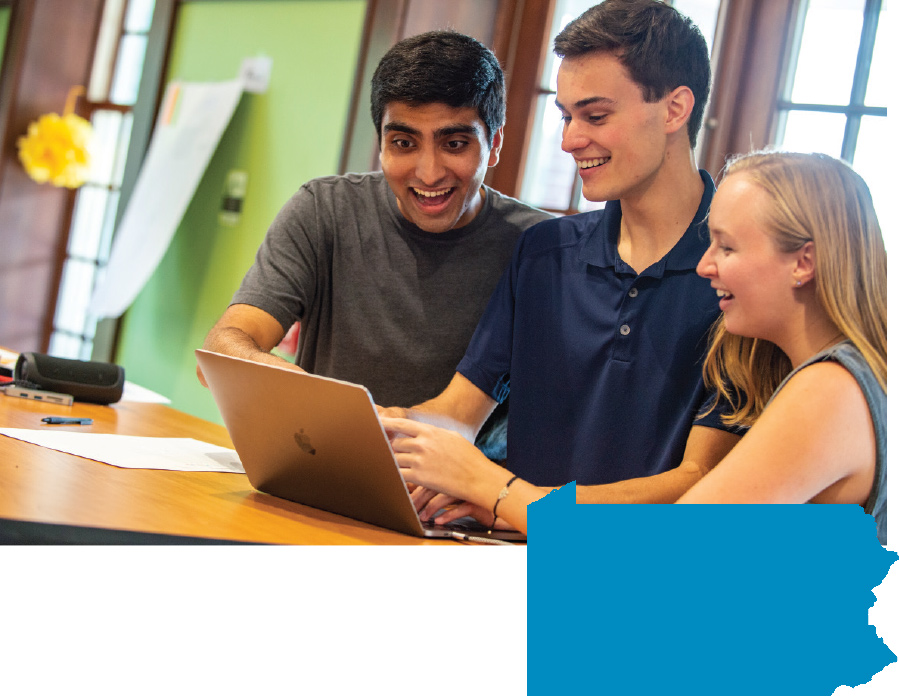 Selinsgrove, Pa.
Selinsgrove, Pa.
There’s no shortage of what Ryan Bailis ’21 calls “wicked problems” — issues that can only be tackled with novel, innovative ideas. This fall, the computer engineering and management major teamed up with Julia Knox ’21 and Kartikeya Sharma ’21 to create a workshop that empowers undergraduates to conquer complex challenges.
What They Did
Sharma, Knox and Bailis led a three-hour design-thinking workshop at nearby Susquehanna University. Design thinking is a problem-solving
process that helps people brainstorm effective, actionable solutions. After hearing about a workshop Sharma, Knox and Bailis taught at Bucknell, Susquehanna professor Emma Fleck invited the three to host a similar event for her management class. The Bucknellians led Susquehanna students through a series of interactive activities to generate creative solutions for dining and laundry service issues.
What They Saw
Knox — who studies markets, innovation & design — says she was excited to see workshop attendees embrace the design-thinking process, especially exercises aimed at encouraging uninhibited imagination. Sharma, a computer science & engineering major, says bringing design thinking to higher education is powerful because it cultivates innovation and gives students the confidence to approach real-world problems — “which we don’t always feel we have the power to do,” he says. After two successful sessions at Susquehanna, the team anticipates bringing their workshop to other nearby universities. They also hope to host events at local high schools and expose even younger students to the power of design thinking.
— Brooke Thames
 Navajo Nation, Arizona
Navajo Nation, Arizona
Uranium mining on Navajo lands ended more than 30 years ago, but its lingering effects are a contemporary concern for history major John Davidian ’20. His research on the impact of mining on workers’ and residents’ health forms the crux of his honors thesis — an endeavor that took him 2,000 miles from Bucknell to the Navajo Nation for a firsthand perspective on a lesser-known story.


Taking the course Frontiers and Borderlands with Professor Paul Barba, history, introduced Davidian to the perils of mining uranium, a radioactive metal that was essential to developing nuclear weapons in the U.S. from World War II into the 1970s. With support from Bucknell’s Mellon Confounding Problems in the Humanities and Arts grant, Davidian explored the Northern Arizona University Archives, New Mexico State Archive and Southwest Research Center at the University of New Mexico. He interviewed historians about miners’ lives during the Cold War and investigated mining’s detrimental health effects, uncovering elevated cancer rates across whole generations as well as birth abnormalities.
What He Learned
Armed with the knowledge gained through his research, Davidian is helping historians — and the general public — to better understand the real cost of nuclear weapons development. He says, “I want to look at history through the lens of working people and learn about their experiences and the injustices they face in terms of ideologies and historical events.”
— Alli Meehan ’22
